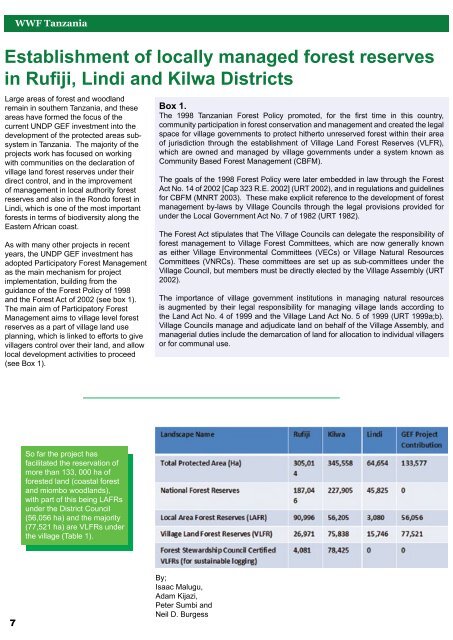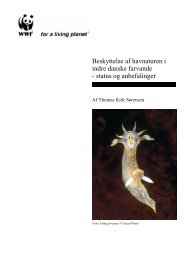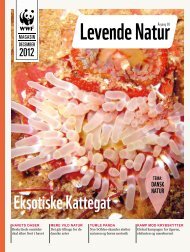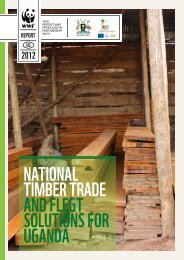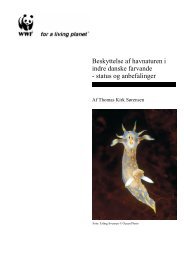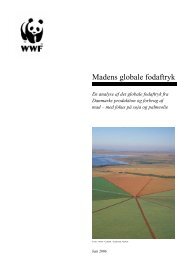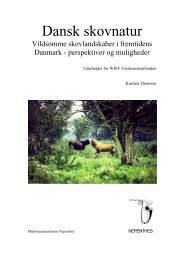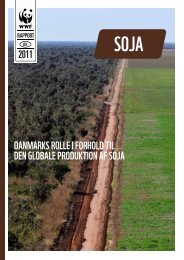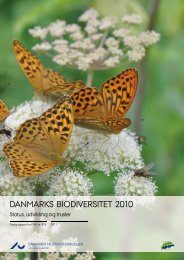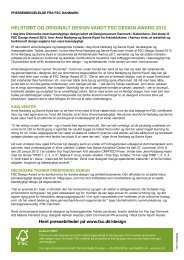About WWF-Tanzania
About WWF-Tanzania
About WWF-Tanzania
You also want an ePaper? Increase the reach of your titles
YUMPU automatically turns print PDFs into web optimized ePapers that Google loves.
7<br />
<strong>WWF</strong> <strong>Tanzania</strong><br />
Establishment of locally managed forest reserves<br />
in Rufiji, Lindi and Kilwa Districts<br />
Large areas of forest and woodland<br />
remain in southern <strong>Tanzania</strong>, and these<br />
areas have formed the focus of the<br />
current UNDP GEF investment into the<br />
development of the protected areas subsystem<br />
in <strong>Tanzania</strong>. The majority of the<br />
projects work has focused on working<br />
with communities on the declaration of<br />
village land forest reserves under their<br />
direct control, and in the improvement<br />
of management in local authority forest<br />
reserves and also in the Rondo forest in<br />
Lindi, which is one of the most important<br />
forests in terms of biodiversity along the<br />
Eastern African coast.<br />
As with many other projects in recent<br />
years, the UNDP GEF investment has<br />
adopted Participatory Forest Management<br />
as the main mechanism for project<br />
implementation, building from the<br />
guidance of the Forest Policy of 1998<br />
and the Forest Act of 2002 (see box 1).<br />
The main aim of Participatory Forest<br />
Management aims to village level forest<br />
reserves as a part of village land use<br />
planning, which is linked to efforts to give<br />
villagers control over their land, and allow<br />
local development activities to proceed<br />
(see Box 1).<br />
So far the project has<br />
facilitated the reservation of<br />
more than 133, 000 ha of<br />
forested land (coastal forest<br />
and miombo woodlands),<br />
with part of this being LAFRs<br />
under the District Council<br />
(56,056 ha) and the majority<br />
(77,521 ha) are VLFRs under<br />
the village (Table 1).<br />
Box 1.<br />
The 1998 <strong>Tanzania</strong>n Forest Policy promoted, for the first time in this country,<br />
community participation in forest conservation and management and created the legal<br />
space for village governments to protect hitherto unreserved forest within their area<br />
of jurisdiction through the establishment of Village Land Forest Reserves (VLFR),<br />
which are owned and managed by village governments under a system known as<br />
Community Based Forest Management (CBFM).<br />
The goals of the 1998 Forest Policy were later embedded in law through the Forest<br />
Act No. 14 of 2002 [Cap 323 R.E. 2002] (URT 2002), and in regulations and guidelines<br />
for CBFM (MNRT 2003). These make explicit reference to the development of forest<br />
management by-laws by Village Councils through the legal provisions provided for<br />
under the Local Government Act No. 7 of 1982 (URT 1982).<br />
The Forest Act stipulates that The Village Councils can delegate the responsibility of<br />
forest management to Village Forest Committees, which are now generally known<br />
as either Village Environmental Committees (VECs) or Village Natural Resources<br />
Committees (VNRCs). These committees are set up as sub-committees under the<br />
Village Council, but members must be directly elected by the Village Assembly (URT<br />
2002).<br />
The importance of village government institutions in managing natural resources<br />
is augmented by their legal responsibility for managing village lands according to<br />
the Land Act No. 4 of 1999 and the Village Land Act No. 5 of 1999 (URT 1999a;b).<br />
Village Councils manage and adjudicate land on behalf of the Village Assembly, and<br />
managerial duties include the demarcation of land for allocation to individual villagers<br />
or for communal use.<br />
By;<br />
Isaac Malugu,<br />
Adam Kijazi,<br />
Peter Sumbi and<br />
Neil D. Burgess


